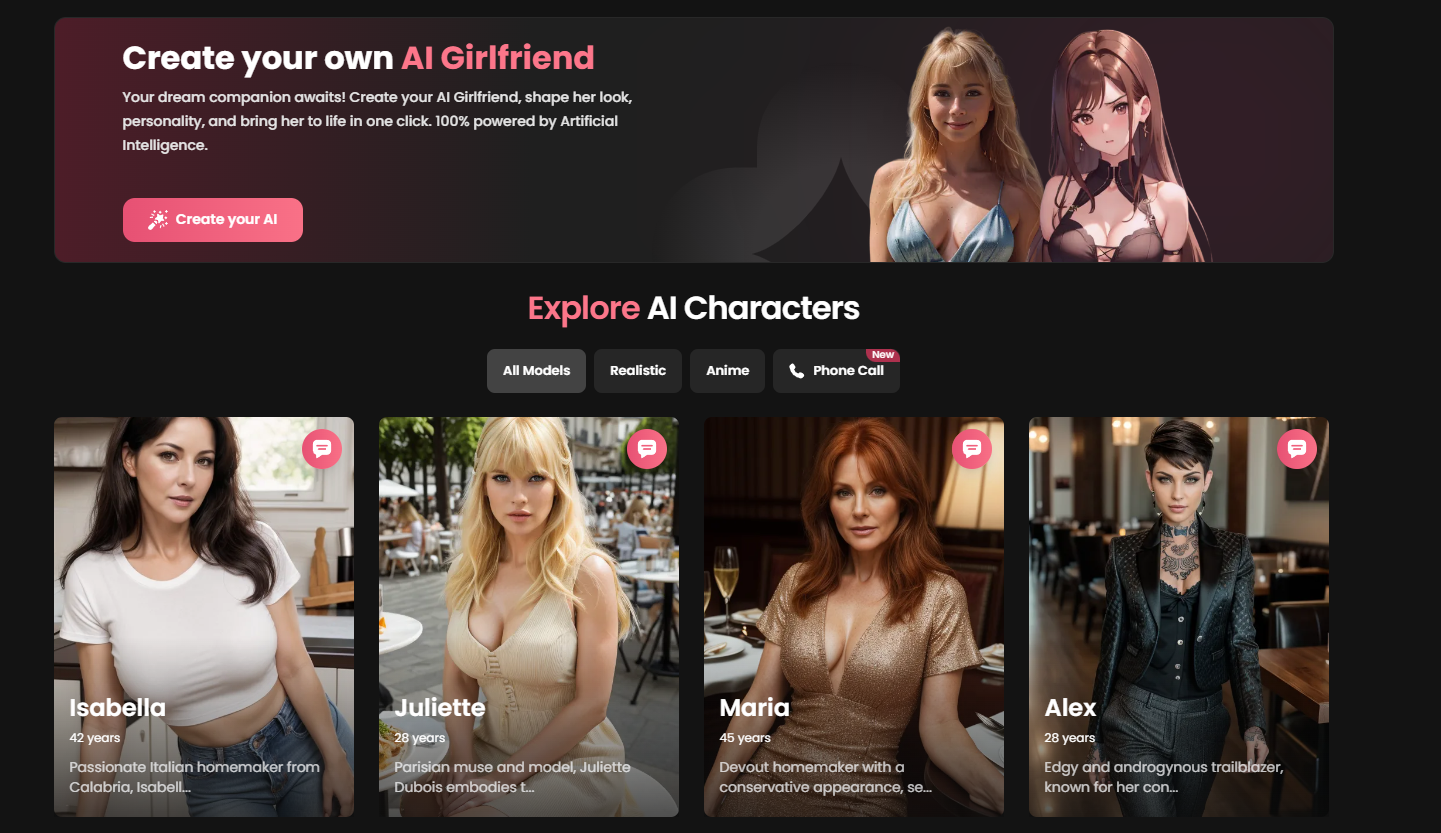Sometimes, fashion trends spark controversy and the latest one to do so is Ai cameltoe. While some may argue that it objectifies women’s bodies, others argue that it empowers them by celebrating their curves.
Despite the backlash, this trend has gained popularity among fashion consumers and shows no signs of disappearing. In this essay, we will explore why Ai cameltoe is here to stay and what its implications are for fashion consumers.
The Emergence of Candy.ai

One of the leading players in the AI Cameltoe game is Candy.ai. Founded in 2023 by a team of tech and fashion enthusiasts, Candy.ai quickly gained attention for its bold designs and innovative use of artificial intelligence.
The Algorithm Behind It All
At the heart of Candy.ai’s success lies its sophisticated algorithm that can analyze body measurements and create custom-fit garments that enhance the appearance of cameltoes. This revolutionary technology has allowed them to cater to diverse body types and sizes, making their products accessible to a wide range of consumers.
But more than just creating visual illusions, Candy.ai also prioritizes comfort and functionality in their designs. Their clothes are made with high-quality fabrics that provide support while still allowing for movement and breathability.
Empowering Women Through Choice
One of the key arguments for supporting AI Cameltoe is that it gives women more choices when it comes to expressing themselves through fashion. For too long, society has dictated what is acceptable or attractive when it comes to women’s bodies. With AI Cameltoe, women can now choose to highlight a part of their body that was previously considered taboo.
Candy.ai founder, Ava Chen, says, We want to give women the power to choose what they feel confident and comfortable wearing. Our clothes are not meant to objectify or sexualize, but rather celebrate the beauty and diversity of women’s bodies.
Pros:
- Prioritizes comfort and functionality in designs
- Innovative use of AI technology
- Empowers women through choice
- Caters to diverse body types and sizes
Seduced.ai: Breaking Stereotypes Through Fashion

Another major player in the AI Cameltoe trend is Seduced.ai. Founded by fashion designer Isabella Martinez in 2024, this brand aims to break stereotypes and challenge societal norms through their bold and provocative designs.
Redefining Beauty Standards
Seduced.ai believes that beauty comes in all shapes and forms, and their clothing reflects that belief. By showcasing different body types and celebrating the natural curves of women’s bodies, they hope to challenge traditional beauty standards that have been imposed on society.
Their use of AI Cameltoe is not just for shock value but rather a statement against the narrow definition of what is considered attractive. As Martinez puts it, Our clothes are not about creating unrealistic ideals; they’re about celebrating real bodies and empowering women to embrace them.
Pushing Boundaries With Bold Designs
One of the main criticisms against AI Cameltoe is that it objectifies women’s bodies. However, Seduced.ai argues that it does quite the opposite – it gives women control over how they want their bodies to be seen.
Their daring designs incorporate elements like sheer fabrics, cut-outs, and strategic ruching to create eye-catching cameltoe illusions. Sometimes, when searching for websites like jerkmate, it’s important to consider factors such as user privacy and safety before choosing a site to use for online sexual encounters. But ultimately, it is the individual wearing the clothes who decides how much they want to reveal and what message they want to convey.
Pros:
- Celebrates diverse beauty standards
- Inclusive designs for all body types
- Empowers women to embrace their bodies
- Gives women control over how they are perceived
PromptChan: A Virtual Stylist at Your Fingertips

PromptChan takes a slightly different approach to AI Cameltoe by focusing on providing a personalized styling experience to its customers. Founded in 2025, this brand has quickly gained popularity among fashion-forward individuals looking for unique and edgy outfits.
Virtual Styling Technology
Using advanced AI technology, PromptChan creates virtual avatars of its customers based on their body measurements and personal style preferences. The avatar then tries on different clothes from the brand’s collection, including those with AI Cameltoe designs, giving customers an accurate visualization of how the garment will look on them. Or, for those who are curious and want to learn more about AI-generated porn, you can visit AI Porn Cum to see the latest advancements in this controversial technology.
This innovative approach makes online shopping more convenient and eliminates the uncertainty of buying clothes without trying them on first. It also allows people to experiment with styles they may not have considered before.
Revolutionizing Online Shopping
PromptChan has disrupted traditional retail methods by offering a fully digital shopping experience. Customers can browse through their extensive catalog and purchase items directly from their website or app without ever leaving their homes.
The convenience factor has been a major selling point for PromptChan, especially during times when physical stores have limited operating hours or are closed altogether. Plus, with PromptChan’s virtual styling feature, customers can confidently purchase AI Cameltoe clothing knowing exactly how it will fit and look on their bodies.
Pros:
- Promotes body positivity by showcasing clothes on diverse bodies
- Convenient online shopping experience
- Eliminates uncertainty when buying clothes online
- Cutting-edge virtual styling technology
Cons:
- Might create unrealistic beauty standards for some individuals
- Potential for objectification of women’s bodies
The Final Verdict
AI Cameltoe may be a controversial trend, but its popularity shows that it is meeting a demand in the fashion industry. From innovative use of AI technology to promoting body positivity and empowering women, brands like Candy.ai, Seduced.ai, and PromptChan are challenging norms and pushing boundaries through their designs.
While there are valid concerns about the potential objectification and unrealistic beauty standards associated with AI Cameltoe, it ultimately comes down to personal choice and perspective. As long as these brands continue to prioritize inclusivity, diversity, and empowerment in their messaging, AI Cameltoe is here to stay – whether we embrace it or not.

Candy.ai
✔️ Generate AI Porn Images
✔️ Listen To Voice Messages
✔️ Fast Response Time

Seduced.ai
✔️ Generate AI Models
✔️ Save & Reuse Girls
✔️ 300 Images Per Month

PromptChan.ai
✔️ Completely Free To Test
✔️ Edit Your AI Models
✔️ Make Porn Images (no limit)
What is a cameltoe and why is it associated with AI?
A cameltoe refers to the visible outline of a woman’s labia majora through tight clothing. It is associated with AI as it has been used in machine learning algorithms to identify and label images containing this characteristic, often for inappropriate or objectifying purposes. This association highlights the need for ethical considerations and diverse representation in AI development.
Are there any ethical concerns surrounding the use of AI to identify cameltoes?
As with any use of AI, there are ethical considerations that must be addressed when using it to identify cameltoes. This includes issues such as privacy and consent, potential biases in the algorithm’s training data, and the objectification of bodies. It is important for those developing and implementing this technology to carefully consider these concerns and work towards solutions that prioritize respect and autonomy.

